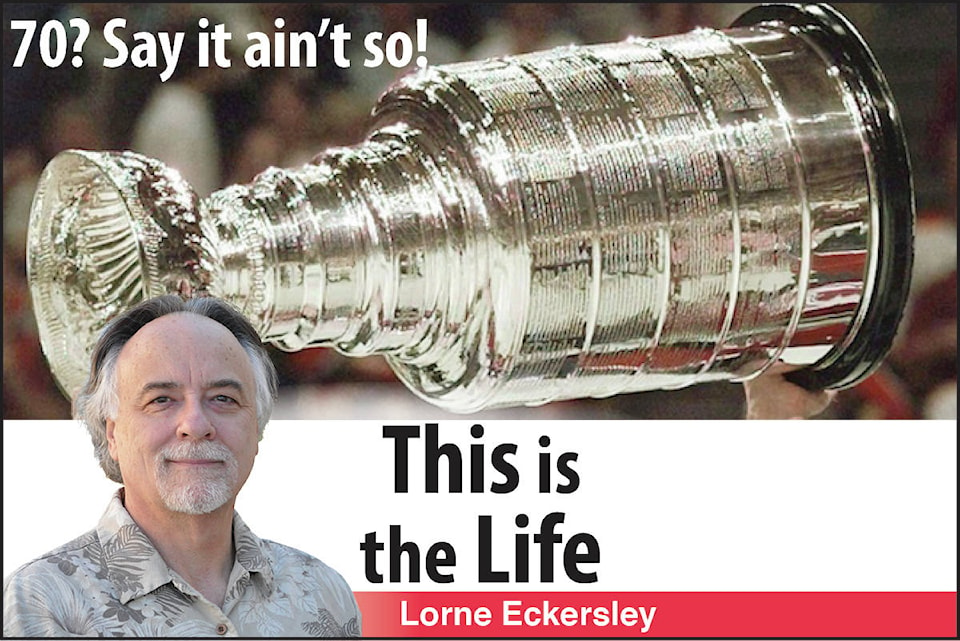When I heard on the radio last Tuesday that Bobby Orr had turned 70 I did a double take. I was a dyed-in-the-wool Toronto Maple Leaf fan in the 1960s, which was a heady decade for my team. The Leafs won four Stanley Cups, and the Boston Bruins were pretty much also-rans for much of that time. The memories are so clear it seems impossible that Orr is 70.
Any hockey fan worth his or her salt knew the name Bobby Orr well before he joined the Bruins as an 18-year-old. Like Wayne Gretzky in the 1970s, Orr was a child prodigy, a phenom who was tagged early as a can’t miss prospect.
He made a strong impression in the 1966-67 season which, coincidentally, was the year my dad had his first knee surgery to remove damaged cartilage. Seeing Dad go through that painful experience, with a recovery time of nearly three months, was a foreshadowing of what Orr would eventually face. In that first year, Orr played 61 games. He scored 13 goals and added 28 assists, and walked away with a Calder Trophy as the league’s top rookie. He also finished third in Norris Trophy voting for the top defenceman, behind veterans Harry Howell and Pierre Pilote, who were near twice his age. In accepting the Norris, Howell made the legendary statement that the trophy would likely be Orr’s for many years to come.
Howell’s comment would turn out to be a bit of an understatement. Bobby Orr won the James Norris Memorial Trophy following the next eight seasons. Arguably, Orr benefitted from NHL expansion and weaker opposition but his dominance was jaw-dropping. His brush cut eventually grew out, and anyone who watched a Bruins game became familiar with Orr winding up behind his own net, surveying the ice and making a razor-sharp pass or just carrying the puck into the opposition’s end. No one, but no one, could match his speed and he was extraordinarily strong on his skates, despite the well-known damaged knees.
By his fourth season, he was putting opponents to shame. In 1969-70 he missed only four games, scored 33 goals and had 87 assists. Often overlooked is that Orr was never a pushover when it came to physical play. He had 125 minutes in penalties that year, one of five times he would eclipse the century mark. He finished off that memorable season by leading the Bruins to a Stanley Cup championship, the team’s first since World War II.
For nine years he was the most dominant defenceman in the game, and completely changed the way the position would be played from then on. Stay at home defencemen still have their place, but without fast, mobile rear guards, NHL teams don’t stand a chance.
One of my favourite stats came in 1970-71, the year between his two Stanley Cup, and Conn Smythe Trophy wins. He put up a plus-minus of 124, which means he was on the ice for 124 more goals for than against when the teams were playing at even strength. He won the league scoring title that year, with 139 points, too. Orr was the best I have ever seen at controlling a game, an ability rivaled only by Wayne Gretzky, who had neither Orr’s strength or speed.
But the best moment in a spectacular career cut short by knee injuries, came in that first Stanley Cup win, in a fourth game against the St. Louis Blues in the final series. The Bruins were up 3-0 in the series and, going into Game 4 at the Boston Garden, everyone expected the Stanley Cup to be awarded that night. The Blues weren’t lying down, though, and they had a 3-2 lead in the third period. Johnny Bucyk tied the game, and it went into overtime. No one who saw that game will forget that moment, frozen in time, when No. 4 took a pass from Derek Sanderson from behind the Blues’ net and scored the game-winner against Glenn Hall. Orr made the shot and then jumped to avoid Hall’s goalie pads, with defenceman Noel Picard flipping Orr’s rear skate with his stick. Flying through the air, Orr threw up his hands in celebration, the thrill showing on his face.
Many years later I was able to purchase a signed copy of that famous photo at a Creston Rotary Club auction. The item had, course, been donated by none other than Johnny Bucyk. It still makes me smile every time I look up at it from the chair in my Advance office.
